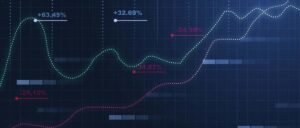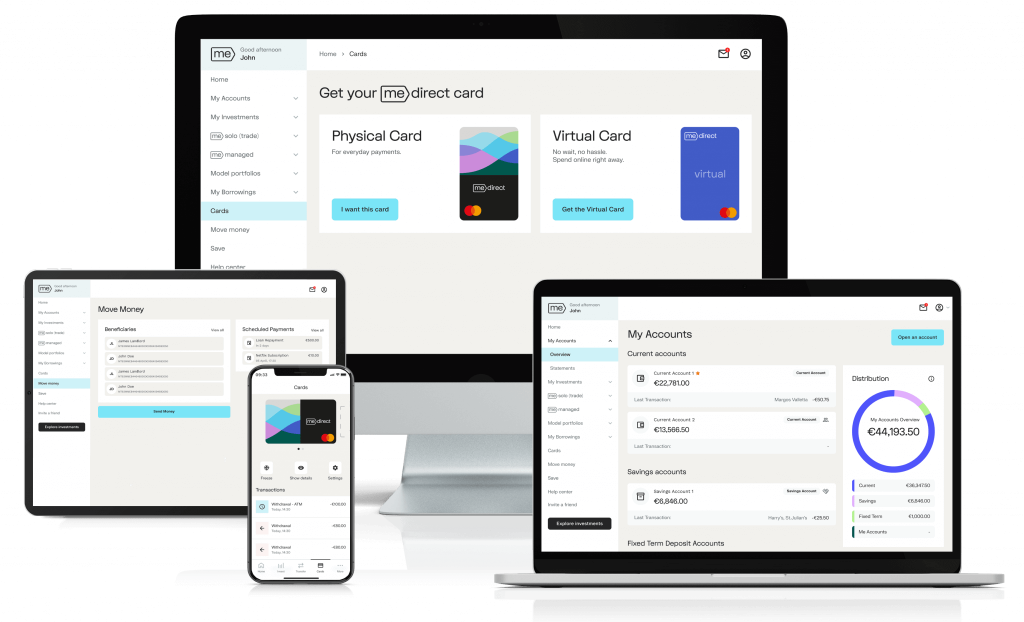By Jeff Schulz, CFA. Director, Investment Strategist – ClearBridge
Key Takeways:
- The global coronavirus pandemic has unleashed historic volatility, suggesting a recession is underway.
- The initial liquidity-driven downturn has largely played out as correlations are normalizing and leverage has come down. Stocks should now be driven more by fundamentals as investors handicap both the virus outbreak and its associated recession.
- We believe a durable bottom for equities and the economy will form when the virus spread comes under control and credit markets confidently turn upward.
- An unprecedented policy response to the economic shutdown should help avoid a worst-case outcome and accelerate a recovery, but the speed in which aid reaches small businesses will be critical.
Market Overview:
Almost every aspect of the recent market collapse has been unique, from its cause (a global pandemic) to the speed of the market selloff to the response from policymakers around the globe. Black swan events are by definition nearly impossible to predict, as each one results from a deviation from normal and brings its own individual signature. The extent to which a previously unknown virus has led countries to close borders and limit both business and personal activity is unprecedented. Global supply chains, an initial concern two months ago when the coronavirus was still believed to exist only within China, have been upended. Once it became clear that COVID-19 was spreading largely unchecked within the U.S., investors fled equities and rushed for the safety of government bonds. This caused yields to plummet to all-time lows, with even the 30-year Treasury briefly yielding less than 1%, and the S&P 500 Index saw its fastest decline of -20% (a bear market) from a prior peak in just 22 days. To put this in perceptive, the second-fastest drawdown took twice as long and occurred over 90 years ago as the country descended into the Great Depression.
Exhibit: Fastest Bear Market from Peak in History

The velocity of the recent drawdown was particularly pronounced for several reasons. Lofty valuations, combined with a sharp and severe increase in the probability of a recession, produced a liquidity crunch that exacerbated the initial selloff. Coming into February, equity multiples were stretched, with markets largely pricing in a soft-landing from an economic soft patch. S&P 500 earnings growth was expected to reaccelerate and grow 10% in 2020. However, as it became clear that COVID-19 was going to cause substantial economic damage over an indeterminate period, the new reality and greater uncertainty warranted a change in valuation. This dramatic shift in expectations created a much more damaging liquidity crisis as many systematic investors were crippled by the combination of rising correlations and leverage, which led to forced selling to stay within margin requirements. Volatility across nearly every asset class skyrocketed as this negative feedback loop perpetuated itself. It appears, however, that this second leg of the downturn has largely played out, as cross-asset correlations are now returning to normal levels and leverage has come down. Going forward, we believe equity markets should be driven more by fundamentals as investors try to handicap both COVID-19 and its associated recession.
A strong labor market and broader consumer strength had been the foundation for a soft landing, despite weakness in manufacturing driven by trade-war uncertainty. However, jobless claims set consecutive new all-time highs in each of the last two weeks, going from 211,000 at the start of the month to 3.28 million two weeks ago and 6.64 million this week. The previous high in jobless claims was 695,000 in 1982, when there was a much steadier and more gradual increase in claims over an 18-month period. With 9.92 million people laid off in just the last two weeks, we believe the unemployment rate will increase into the low double digits over the coming months from February’s 3.5% mark. Nearly 40 million Americans work in industries directly impacted by lockdowns. While not all will lose their jobs, we believe there will unfortunately be more layoffs in the coming weeks as companies shed workers in an effort to remain solvent. Given the scale of shutdowns forcing businesses to close, recent data suggest the second quarter of 2020 change in GDP could set a new low for the worst single quarter in U.S. history. This dubious claim to fame is currently held by the first quarter of 1958, which saw a post-war record of -10%.
With a recession likely already underway, many investors are attempting to quantify the further drawdown stocks may face. History is a common starting point in these efforts. Since 1948, the S&P 500 has fallen 30% on average from peak to trough during 11 recessionary periods. The 34% decline from the February 19 peak to the March 23 low has already eclipsed these. While the ultimate trough will be known only in hindsight, the fall to date suggests quite a bit of negativity had been baked into equity prices. Importantly, stocks tend to anticipate turning points in the economy (albeit with many false starts) and have troughed an average of three months before the end of past recessions
Exhibit: Stock Anticipate Economic Recoveries

We believe a durable bottom for equities and the economy will form when the following key conditions are met: a suitably strong policy response emerges, COVID-19 begins to come under control and credit markets confidently turn upwards, pacifying solvency concerns. Strong fiscal and monetary policy responses have materialized in recent weeks, helping to buoy stocks and stabilize credit. However, the virus continues to spread rapidly, preventing financial markets from rebounding closer to pre-outbreak levels.
The Policy Response: Fiscal
The speed of passage and size of the Coronavirus Aid, Relief and Economic Security (CARES) Act deserves praise. Congress quickly put together a $2.2 trillion fiscal stimulus package, equivalent to 10% of GDP. On paper, this package should help blunt the impacts of social distancing measures that currently impact over 75% of the population. The stimulus bill is enough to offset a 25% decline in GDP for five months. What remains to be seen is how quickly this stimulus can arrive in the hands of both corporations and individuals. A longer delay will translate into a more prolonged and deeper hole to dig out of. History would suggest caution is warranted here. Following the passage of the last two recessionary fiscal packages (2001 and 2008), it took about three and a half months for consumers to receive checks. As a result, neither package stemmed the tide of those downturns.
Equally important, with limited cash reserves, most small businesses cannot survive an environment where revenues fall to zero for a prolonged period. Keeping smaller companies afloat is a paramount concern because it allows a much faster recovery if workers have a job to return to when social distancing measures are eased. But getting capital to these small businesses will likely take some time as the sheer volume of applications makes administration more difficult and many small businesses do not have relationships (and thus documentation) in place with the entities disbursing funds (loans) under the stimulus bill. However, Treasury Secretary Mnuchin has discussed the idea of streamlining the Small Business Administration (SBA) loan process to allow for quicker disbursement of funds. To that end, the SBA recently released the loan application document for this program, which is only four pages, although the process for getting a loan is not as simple as just filling out a short application. While minimizing abuse is an important concern, hopefully these programs can be administered with minimal red tape.
The Policy Response: Monetary
The Federal Reserve has also been extremely busy attempting to prevent the exogenous shock of COVID-19 from triggering worse problems such as a liquidity or credit crunch. In two weeks, the Fed deployed its entire arsenal from the Global Financial Crisis, and then took additional pages from the playbooks of the European Central Bank (ECB) and the Bank of Japan. The Fed effectively took a kitchen sink approach, then found a second kitchen sink and tried that one too. This was Chairman Powell’s “Do Whatever It Takes Moment,” which was what then-ECB President Mario Draghi said during efforts undertaken in 2012 when the continuing existence of the eurozone was coming into question.
The Fed has introduced an alphabet soup of programs, including an open-ended quantitative easing (QE) program that has been expanded to include new types of bonds. It has also announced programs intended to provide liquidity and support to various markets, including those for investment grade corporate bonds, repurchase agreements (repos), money markets, municipal bonds, commercial paper, small business loans, student loans, credit card loans, auto loans and even exchange-traded funds (ETFs).
Beyond cutting interest rates to zero, the Fed will provide trillions of dollars of liquidity to help stabilize financial markets. Many corners of the credit markets that previously had been showing strain, such as repos, are starting to normalize. Furthermore, credit issuance has resumed after a nearly two-week pause with the latter third of March perhaps the strongest period of investment grade credit issuance on record. Driven by this burst, high-quality issuance set a new all-time high in March. While monetary stimulus is not the textbook tool to fight a supply shock, the Fed has gone to extraordinary lengths to prevent these issues from worsening and causing “echoes” in credit markets. When the economy eventually turns the corner, accommodative policy and the trillions of dollars made available for lending (nearly 35% of GDP combined) should help accelerate the recovery.
The Spread of COVID-19
The final piece of the puzzle necessary for a durable bottom will come from a very different area: medicine. Ultimately, the threat presented from COVID-19 needs to be reduced or eliminated for the social distancing measures impacting the economy to be eased. This can come in several forms. A medical breakthrough that allows for better treatment of sick patients (both in terms of hospital stay duration and mortality) would help. Development of a vaccine would be even better, and while we are not medical experts, our colleagues tell us this is still likely 12–18 months away.
In the interim, we believe a peaking of the growth rate for new infections could serve as a catalyst for a durable bottom. If investors can begin to accurately gauge when social distancing measures might begin to be lifted, they can start to price the impact to corporate earnings and solvency with greater confidence.
Some investors are looking to how the virus, economy and stock markets responded in places like China to gain additional insight because the spread of coronavirus began later in the U.S. Chinese authorities imposed a forceful quarantine as it became clear there was an outbreak and newly reported confirmed cases peaked 21 days after the lockdown began. By contrast, the U.S. employed a more informal and regionalized lockdown, which started only in mid-March. The less aggressive lockdown, delayed initial response and lack of adequate testing are key differences that will likely prolong the U.S.’s battle.
Given these variations, Italy could be a better case-study for what might be coming. Although the U.S. and Italy also have some important differences, if we were to follow Italy’s trajectory, markets would likely remain in limbo for the next two to four weeks until greater clarity begins to emerge.
Consensus currently expects the U.S. to experience a deep, short-lived recession. This viewpoint relies on two important assumptions: first, that the battle with COVID-19 will be over by the end of spring, which would allow social distancing measures to be lifted; and second, that there will be no future outbreaks or contagion. This outlook represents a best-case scenario, as any further delay to lockdowns would prolong the duration of the recession. Perhaps even more importantly, a second wave of COVID-19 cases could require social distancing to be re-introduced regionally if not nationally, which would lead to another leg lower and further economic pain. While China is currently attempting to return to normal as the virus has largely come under control within its borders, the country is still operating at below-normal levels (economically speaking) and has closed its borders to foreigners (and restricted the entry of its own citizens) to try and prevent the re-importation of the virus.
Counter Trend Rally?
Ultimately, this recession’s end date will only be known with the benefit of hindsight. However, there is a cohort of investors who believe we have already seen the lows for this cycle, with the S&P 500 rallying 17.6% off its March 23 low in just three trading sessions, before ending the month 11.6% above the recent bottom. In fact, the three-day advance last week was the largest in 90 years. Although it’s certainly a possibility that we’ve seen the low, calling a market bottom at any point can be challenging due to the prevalence of countertrend rallies.
A counter trend rally is a strong (and often short-lived) rally that occurs amid a larger market drawdown. Often, these periods of market strength fool investors into thinking a bottom has been formed, only to disappoint them when the market later rolls over and resumes its larger decline. During prolonged bear markets such as those occurring during past recessions, investors that have fallen victim to several failed countertrend rallies often under-allocate to equities or sell out completely, which can be detrimental when a new bull market eventually starts. Deeper recessions appear to generate larger countertrend rallies, with 15%–25% moves higher in stocks during the 1973–75, 2001, and 2007–09 recessions. These do not tend to be one-off events within a recession either. Between February 2008 and January 2009, there were eight notable countertrend rallies.
Exhibit: Counter-Trend Rallies Commonplace

As we close this letter, a quote by Vladimir Lenin comes to mind “There are decades where nothing happens, and there are weeks where decades happen.” The global economy will likely be forever altered from the events that have transpired in the last few short weeks (although they have felt much longer). What will the world look like on the other side of this storm? Will supply chains become shorter and more domestically focused? Will more countries continue to close borders in an effort to suppress the next outbreak? Will American consumers go back to their pre-virus daily lives and gather in churches, malls and restaurants, or at concerts and sports events, and will they travel while there is no available vaccine or cure? On a more personal note, will we go back to traveling to visit clients and speak at conferences as frequently, or will virtual meetings become the new normal?
No one can know the answer to any of these questions. However, we believe changes in consumer behavior and fears of future outbreaks will likely impact behavior in the short-to-intermediate term, which will dampen the economic recovery to something more akin to a backward “J” rather than a full “V.” Businesses impacted by the outbreak have been given a lifeline with recent stimulus, but it may not matter if consumers change their daily routines more permanently.
We believe the Fed’s extraordinary measures have staved off the liquidity crisis plaguing markets earlier in March. This is clearly evident as both the U.S. dollar and credit spreads have begun to re-normalize. With financial tail risks truncated, we believe that the peak in volatility has likely been seen, even if the market may retest its lows in the coming weeks or months before beginning to move sustainably higher. This dynamic would not be unprecedented. For example, the CBOE Volatility Index or VIX, a measure of volatility, hit its high five months before the trough in equities during the Global Financial Crisis.
Legg Mason Key risks and Disclaimers
Forecasts are inherently limited and should not be relied upon as indicators of actual or future performance.
All investments involve risk, including possible loss of principal.
The value of investments and the income from them can go down as well as up and investors may not get back the amounts originally invested, and can be affected by changes in interest rates, in exchange rates, general market conditions, political, social and economic developments and other variable factors. Investment involves risks including but not limited to, possible delays in payments and loss of income or capital. Neither Legg Mason nor any of its affiliates guarantees any rate of return or the return of capital invested.
Equity securities are subject to price fluctuation and possible loss of principal. Fixed-income securities involve interest rate, credit, inflation and reinvestment risks; and possible loss of principal. As interest rates rise, the value of fixed income securities falls. International investments are subject to special risks including currency fluctuations, social, economic and political uncertainties, which could increase volatility. These risks are magnified in emerging markets. Commodities and currencies contain heightened risk that include market, political, regulatory, and natural conditions and may not be suitable for all investors.
Past performance is no guarantee of future results. Please note that an investor cannot invest directly in an index. Unmanaged index returns do not reflect any fees, expenses or sales charges.
The opinions and views expressed herein are not intended to be relied upon as a prediction or forecast of actual future events or performance, guarantee of future results, recommendations or advice. Statements made in this material are not intended as buy or sell recommendations of any securities. Forward-looking statements are subject to uncertainties that could cause actual developments and results to differ materially from the expectations expressed. This information has been prepared from sources believed reliable but the accuracy and completeness of the information cannot be guaranteed. Information and opinions expressed by either Legg Mason or its affiliates are current as at the date indicated, are subject to change without notice, and do not take into account the particular investment objectives, financial situation or needs of individual investors.
The information in this material is confidential and proprietary and may not be used other than by the intended user. Neither Legg Mason or its affiliates or any of their officer or employee of Legg Mason accepts any liability whatsoever for any loss arising from any use of this material or its contents. This material may not be reproduced, distributed or published without prior written permission from Legg Mason. Distribution of this material may be restricted in certain jurisdictions. Any persons coming into possession of this material should seek advice for details of, and observe such restrictions (if any).
MeDirect Disclaimers
This information has been accurately reproduced, as received from Legg Mason Investments (Europe) Limited. No information has been omitted which would render the reproduced information inaccurate or misleading. This information is being distributed by MeDirect Bank (Malta) plc to its customers. The information contained in this document is for general information purposes only and is not intended to provide legal or other professional advice nor does it commit MeDirect Bank (Malta) plc to any obligation whatsoever. The information available in this document is not intended to be a suggestion, recommendation or solicitation to buy, hold or sell, any securities and is not guaranteed as to accuracy or completeness.
The financial instruments discussed in the document may not be suitable for all investors and investors must make their own informed decisions and seek their own advice regarding the appropriateness of investing in financial instruments or implementing strategies discussed herein.
If you invest in this product you may lose some or all of the money you invest. The value of your investment may go down as well as up. A commission or sales fee may be charged at the time of the initial purchase for an investment and may be deducted from the invested amount therefore lowering the size of your investment. Any income you get from this investment may go down as well as up. This product may be affected by changes in currency exchange rate movements thereby affecting your investment return therefrom. The performance figures quoted refer to the past and past performance is not a guarantee of future performance or a reliable guide to future performance. Any decision to invest should always be based upon the details contained in the Prospectus and Key Investor Information Document (KIID), which may be obtained from MeDirect Bank (Malta) plc.





